Not all sushi is gluten-free. We checked all popular ingredients for you like nori sheets, sushi rice, and various sushi fillings. You will find answers to whether imitation crab, wasabi, or eel sauce is gluten-free or not. We also included TWO super easy recipes for homemade gluten-free sushi if you want to try making it at home. (See table of contents below if you want to jump around.)
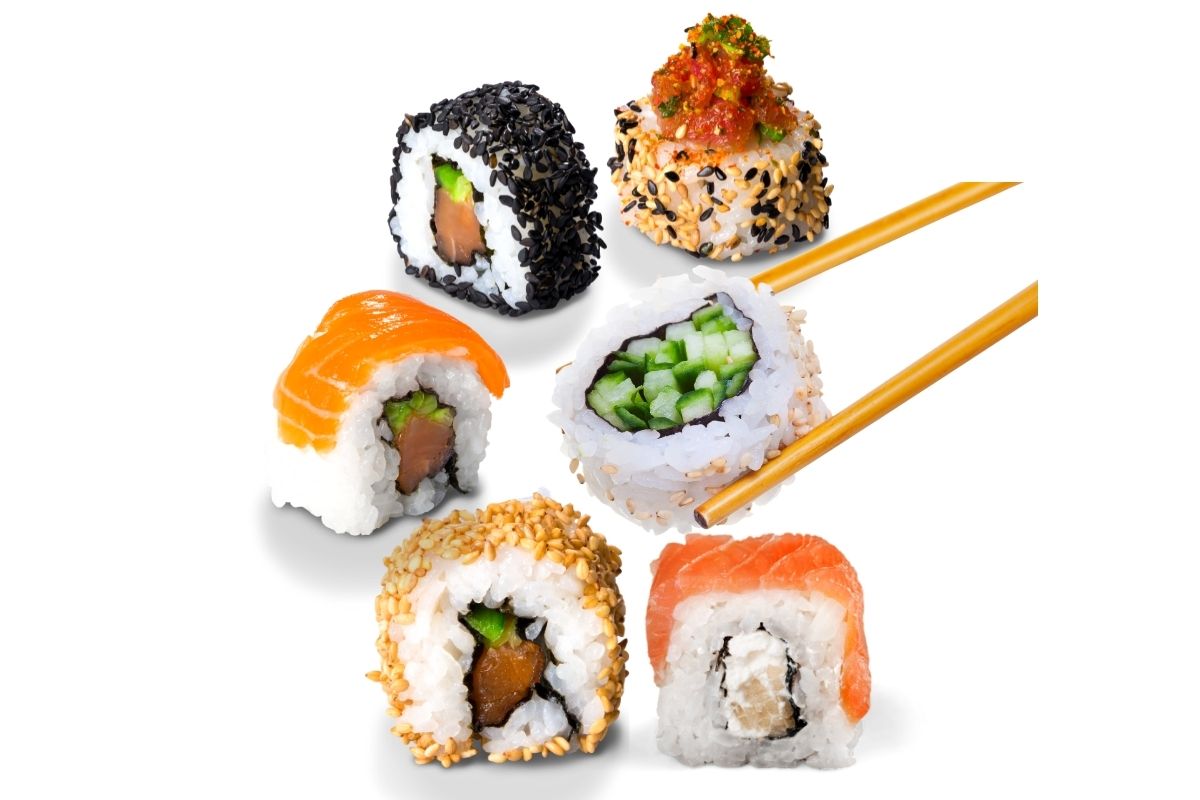
Want to save this post?
Enter your email below and get it sent straight to your inbox. Plus, I’ll send you budget recipes and money-saving tips every week!
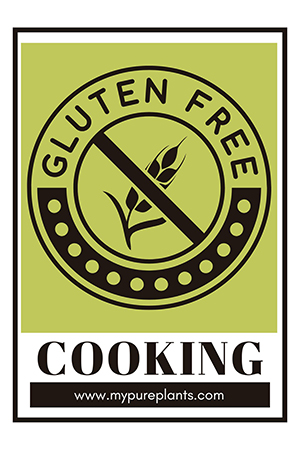
⇒ GET OUR FREE 5-DAY EMAIL SERIES NOW ABOUT THE 5 SECRETS TO SIMPLIFYING GLUTEN-FREE COOKING!
What is sushi?
Why do I say that not all sushis are gluten-free? Well, the reason is that there are at least 1000 ways to prepare sushi. However, if you know which ingredients are safe, you can mix and match and choose the right ones. That way you can enjoy your night out with your family and friends even if you end up in a sushi restaurant.
3 main ingredients are:
- Sushi-meshi – also known as vinegared sushi rice
- Nori – thin paper-like seaweed sheets that are usually wrapped around maki sushi
- Gu – sushi fillings or toppings depending on which type you order e.g.: maki or nigiri
Is sushi rice gluten-free?
In short, the answer is yes. The traditional or classic way to prepare sushi rice is using a rice cooker, a Hangiri* (a Japanese wooden tub), and an Uchiwa* (a Japanese fan). The main ingredients are rice, rice vinegar, sugar, salt, and water. You can check out Shihoko’s recipe for more details.

The rice that is typically used to make sushi is short-grain white rice*. Apart from cross-contamination issues, rice itself is naturally gluten-free.
Rice vinegar also called rice wine vinegar might be the only suspicious ingredient, which is “made by fermenting the starches in rice using an acetic acid bacteria known as Mother of Vinegar (Mycoderma aceti) and small amounts of rice wine to convert the sugars into alcohol and then into acetic acid “ – by Healthline.
However, there are not supposed to be any wheat-related products involved in making it or among its ingredients. So if the sushi rice is made with distilled rice vinegar, it should be gluten-free.
We checked some of the most popular Japanese rice vinegar brands and what they say about their products. If you need more info, read our “Is vinegar gluten-free?” article.
- Marukan rice vinegar* – according to their website all rice vinegar products are gluten-free.
- Kikkoman rice vinegar* – it is not listed in the GF products section, but based on the ingredients it should be gluten-free.
Is seaweed gluten-free?
In short, the answer is yes. Seaweed sheets aka nori sheets are the ones you see covering maki sushis or used in miso soups.
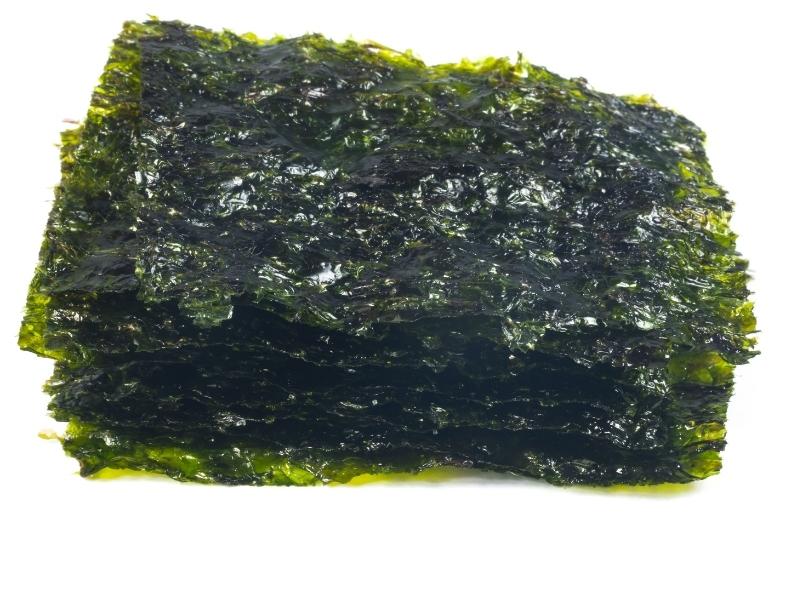
They are actually very thin paper-like sheets of pressed and dried seaweed made similar to actual paper. If you are interested in a bit of historical background or how are they farming it nowadays, this article is very helpful.
Nori sheets are supposed to be made of only seaweeds, which are naturally gluten-free. However, there are different grades based on quality.
- Silver and gold* supposed to be the highest quality, the darkest sheets of all, and the best ones for making sushi. They should mean pure seaweed as well, while you need to pay attention to the ingredients list for buying other quality grades as you may find other ingredients there.
- Green, blue and other colors indicate medium quality. These sheets are usually also greener and lighter.
Gluten-free sushi fillings and toppings
In Japanese, they called the main ingredients aka the fillings of sushi “Gu”. As there are a thousand ways to prepare sushi, the fillings may not be gluten-free. Far from it.
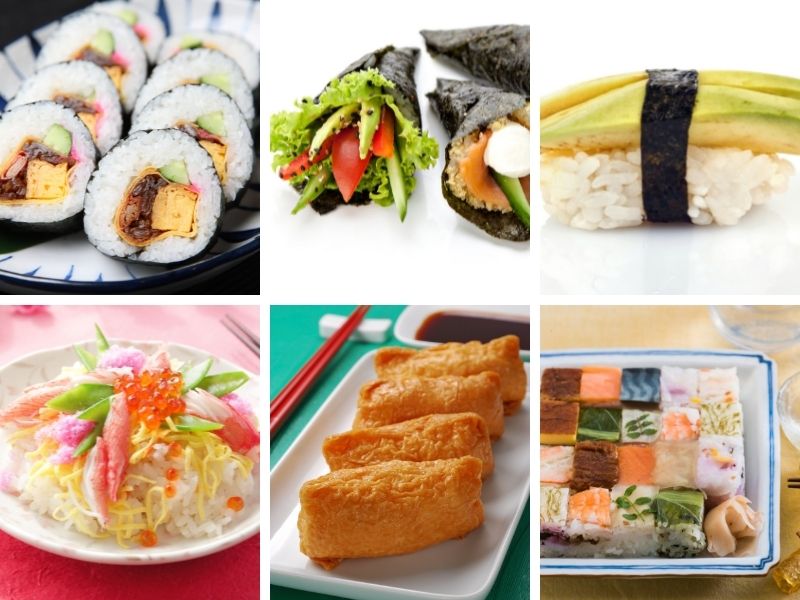
Here is a list of ingredients you need to pay attention to that contain gluten:
- Tempura – It means that the seafood, meat, or vegetable is battered and deep-fried before being added to the sushi. The tempura batter is made with wheat flour, which means it is not gluten-free.
- Breaded ingredients – Some of the less traditional sushis may contain breaded ingredients where the meat, the seafood, or the veggie is covered in wheat flour, then egg, then breadcrumbs, and deep-fried. Sadly, it is never ever gluten-free.
- Surimi aka imitation crab meat – Fake crab meat is actually made of mostly fish and a bunch of different ingredients like starch, egg white, flavors, and such. Here is a very detailed description of how they manufacture surimi. Sadly it is never gluten-free, not vegan.
- Soy sauce-based marinades – Japanese cuisine likes to use soy sauce as part of a marinade for meat and seafood. There are 5 gluten-free soy sauce substitutes, tamari being the most popular. If you order sushi in a restaurant, I am pretty sure they don’t bother using any of the substitutes. Hence, sushis including soy sauce marinated ingredients are not gluten-free.
- Teriyaki sauces, Eel sauce, Ponzu sauce, BBQ sauces – All of these have soy sauce among the ingredients, hence anything that is marinated in these sauces will not be gluten-free as well.
- Japanese omelet (Tamagoyaki) – There is a type of nigiri sushi that has a rolled Japanese fried omelet on top. Sadly this type of omelet is prepared with soy sauce. Soy sauce is not gluten-free. I have low hopes that any restaurant uses one of the 5 gluten-free soy sauce substitutes instead of the real deal.
- Tofu – It is a regular addition to sushis, nigiri or maki, or others. Tofu is actually the curd of soy milk, hence no gluten should be involved. However, it is very rare that the tofu is served without a marinade. And typically said marinade contains soy sauce, which is not gluten-free. Read more about it in our “is tofu gluten-free?” post.
The less is more in the sense that usually the simple sushis are better than the uber-creative ones. Simple maki sushis have fewer ingredients, hence fewer chances to get it wrong. Here is a sadly not too long list of fillings/toppings that naturally do not contain any gluten:
- typical vegetables in sushis: mushroom, cucumber, avocado, carrots, asparagus, snap peas, scallion, etc.
- raw or smoked seafood: salmon, scallops, tuna, real crab, freshwater eel (unagi) etc. without marinade
- masago, tobiko aka raw fish eggs
If you need it to be vegan too, browse through these 16 types of sushi for vegans for even more filling ideas.
Is wasabi gluten-free?
Not always. Did you know that wasabi is eaten with sushi to make raw fish safe? And that 95% of wasabi don’t even contain wasabi? Surprising, huh?
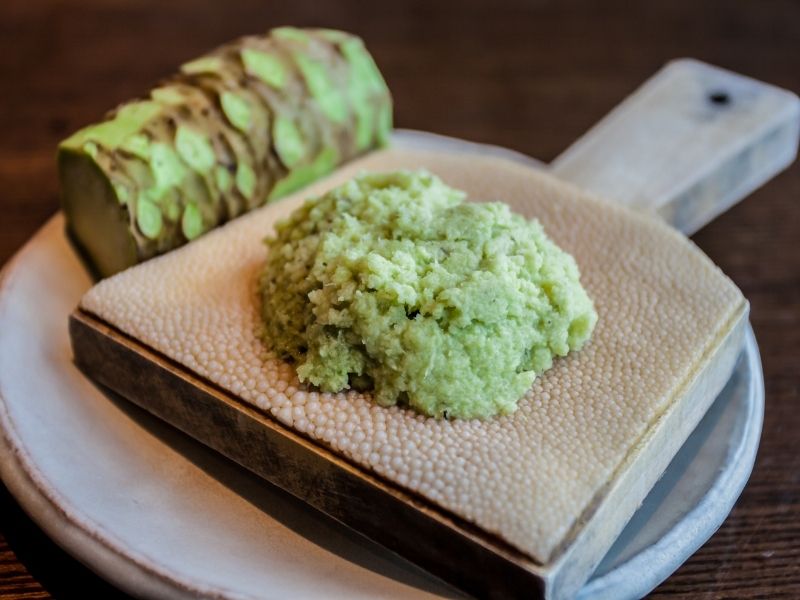
Wasabi paste you likely find in restaurants or in stores contains mainly Japanese horseradish, mustard, starch, flavors, and food coloring. If you are lucky, you can have a 1% wasabi among the ingredients. You can read more about why real wasabi is rare. By the way, Pacific Farms sells 100% freshly grated wasabi* that is certified gluten-free.
If we take a look at the most popular brands, you can see that the most suspicious is likely starch.
- S&B Wasabi* – according to the company’s website as well as the packaging, it is gluten-free. It also includes tons of other ingredients like sorbitol, modified starch, rice bran oil, artificial flavor, xanthan gum, and artificial color.
- Wasabi-O* – no information on the company website, but the allergy info on the box says contains only mustard seeds and soy products.
- Shizuoka Wasabi* – It is sadly not gluten-free as there is a wheat dietary fiber among the ingredients.
- Kikkoman Wasabi* – it is not a paste but a sauce. Therefore, it has a ton of ingredients. There is no information on the company website, and no allergy info on the box but the ingredient lists specifies the starch to be corn starch. However, not vegan as it contains egg yolks.
Is pickled ginger gluten-free?
It should be gluten-free. Pickled ginger is made of young ginger root thinly sliced or grated and pickled in a mix of rice vinegar, sugar, and water.
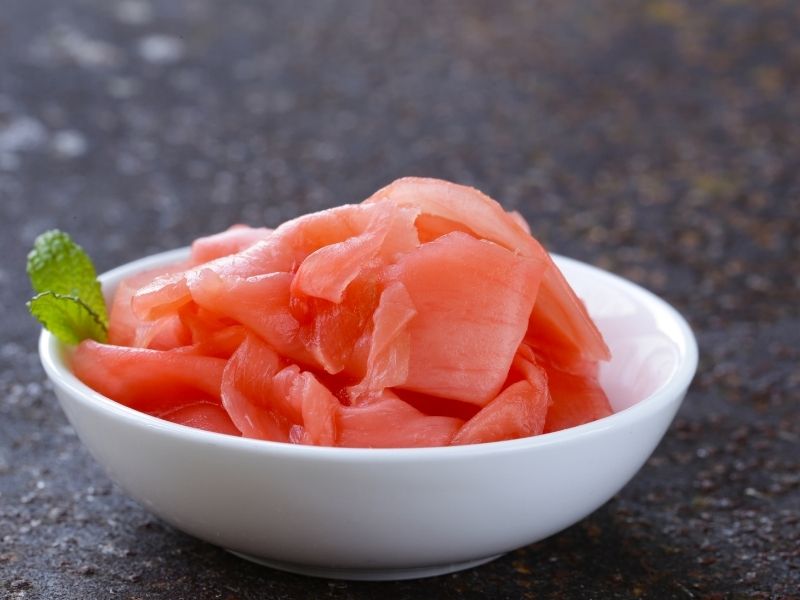
The question is usually what kind of vinegar. I have already explained above that distilled rice vinegar (like Marukan rice vinegar*) should be gluten-free. Therefore, if the ones they serve in the restaurant are made of that or you make them at home like that, it is safe to eat on a gluten-free diet as well.
Most of the labels I have checked list rice vinegar, especially the ones that claim to be authentic or made in one of the Asian countries. I haven’t really come across any brands that would list malt vinegar. If you want to try making some at home, here is Nami’s homemade pickled ginger recipe from Just One Cookbook.
Is soy sauce gluten-free?
Sadly not. Despite its name “soy sauce”, it is not made of entirely soy, but it also contains wheat. Shocker, I know. I was definitely shocked when I had to start eating gluten-free and had to start checking the labels. We have a whole post about why soy sauce is not gluten-free, including 5 gluten-free soy sauce substitutes you can use instead.
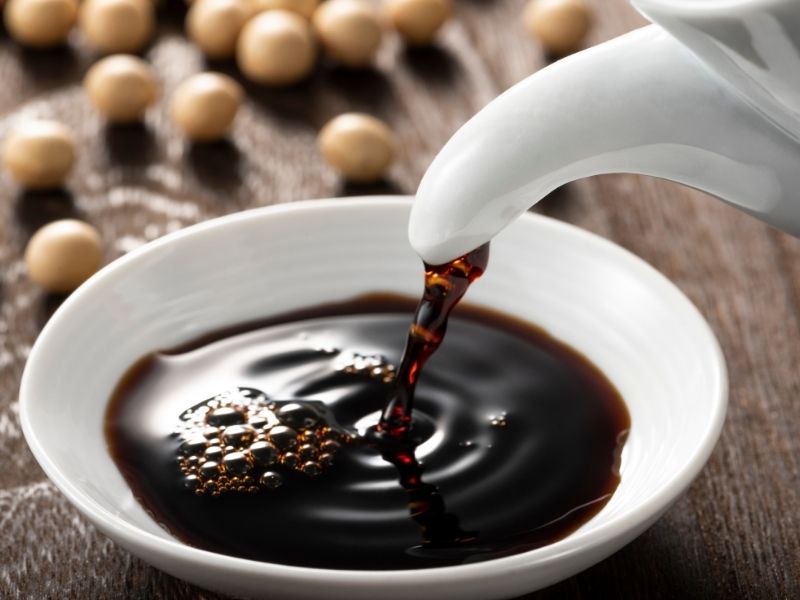
How to order gluten-free sushi
As there are at least 1000 ways to prepare the different types of sushi, the sad truth is that there are just so many ingredients the restaurants work with. So even if you pick sushi that by default has only gluten-free ingredients, you have to take into account cross-contamination.
Is sushi prepared on the same cutting board, with the same knife, rolled in the same bamboo mat? When you ask about gluten-free ingredients, do the servers or sushi chefs answer in confidence or in detail? Or do they say “Probably”?
I guess in high-end restaurants where you see the sushi prepared right in front of you is better. Because you can see how clean they work, you can ask questions and see the ingredients firsthand. Even so, if you have celiac disease you have to be extra cautious as many things can go wrong here.
Easy gluten-free sushi recipes
If you would like to try making your own gluten-free sushi at home, don’t get discouraged. Here are 2 super simple recipes with step-by-step photos on how to make sushi rice with vinegar and how to roll them with a sushi mat.
Sweet Potato Sushi Rolls
These Sweet Potato Sushi Rolls are veggie-only, delicious, kid-friendly recipe that is perfect for beginners. The filling is roasted sweet potato, beetroot, and avocado which are usually loved by most people (as opposed to raw fish which can be a deal-breaker for some). Take a look at these spectacular and colorful rolls. Aren’t they gorgeous?
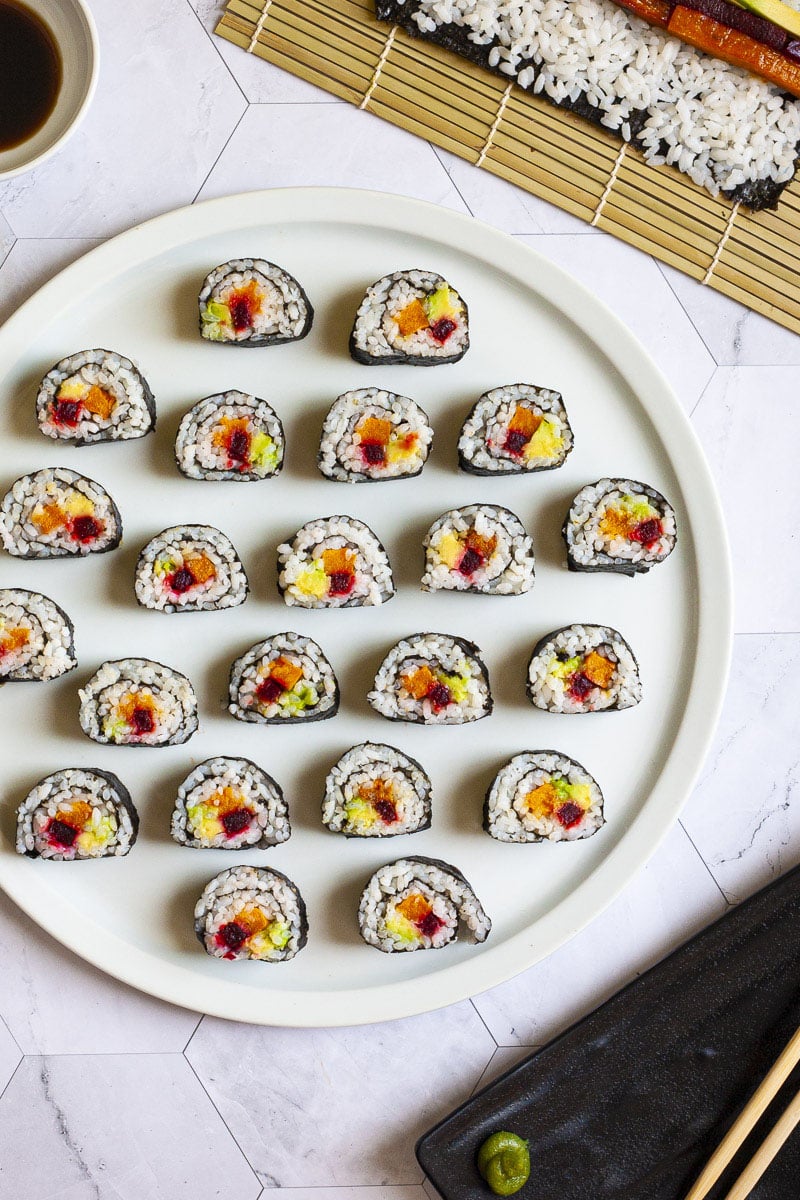
Rice Paper Sushi
This Rice Paper Sushi recipe was specially developed for this who don’t like the taste of seaweed. If you also want to skip nori sheets to make your own sushi, try using rice paper wrappers instead. They are also gluten-free and make rolling maki sushi easier. The filling is fire-roasted red peppers, fresh avocado, and mango slices drizzled with wasabi mayo.
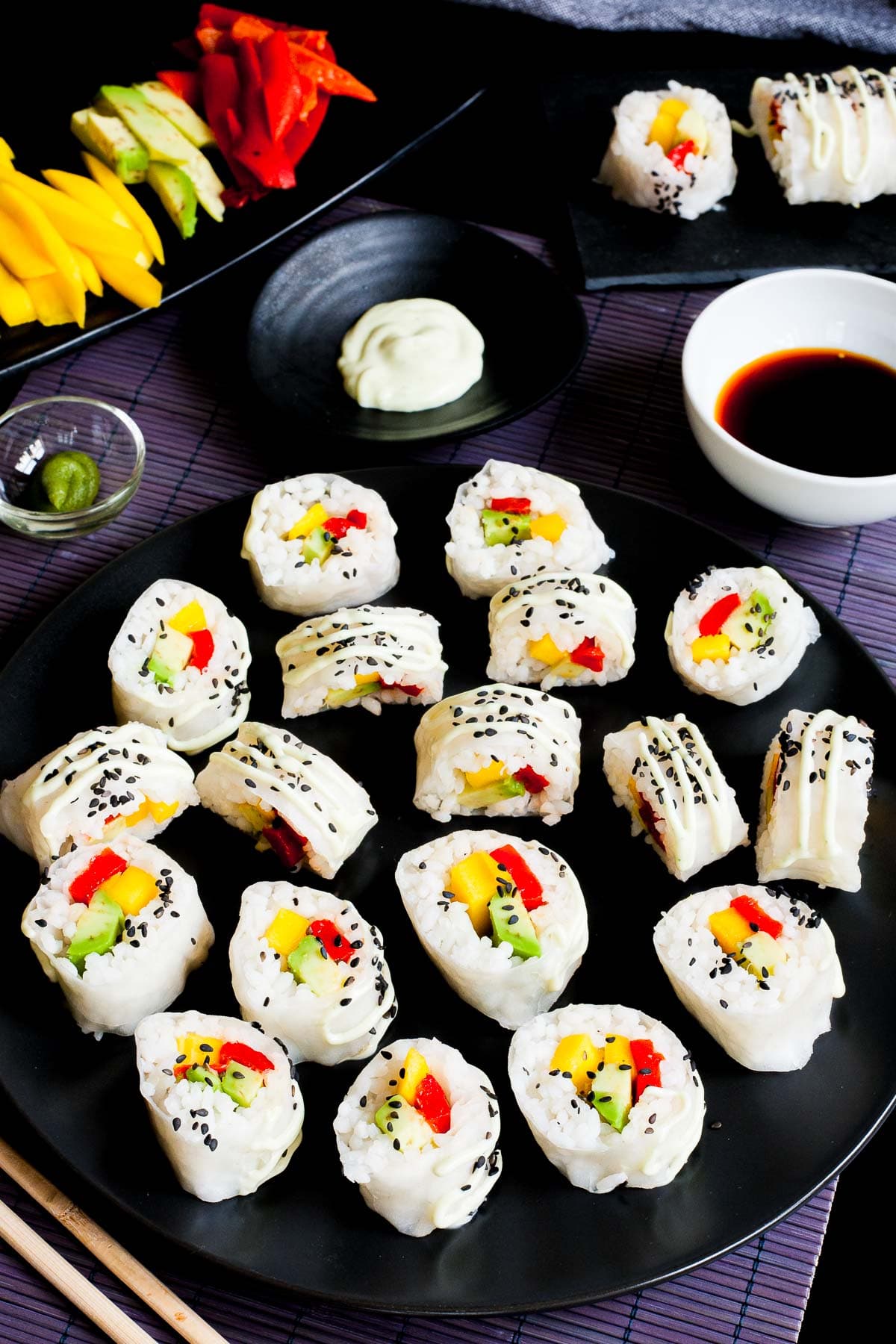
More gluten-free pantry guides
We have also listed 11 vegan foods to avoid on a gluten-free diet.
If you are looking for certified gluten-free products you can buy in stores, check out the below articles. We researched in detail what they were made of and which brands are safe to use. We also give you examples of the best substitutes or of homemade recipes in case you need them.

⇒ GET OUR FREE 5-DAY EMAIL SERIES NOW ABOUT THE 5 SECRETS TO SIMPLIFYING GLUTEN-FREE COOKING!



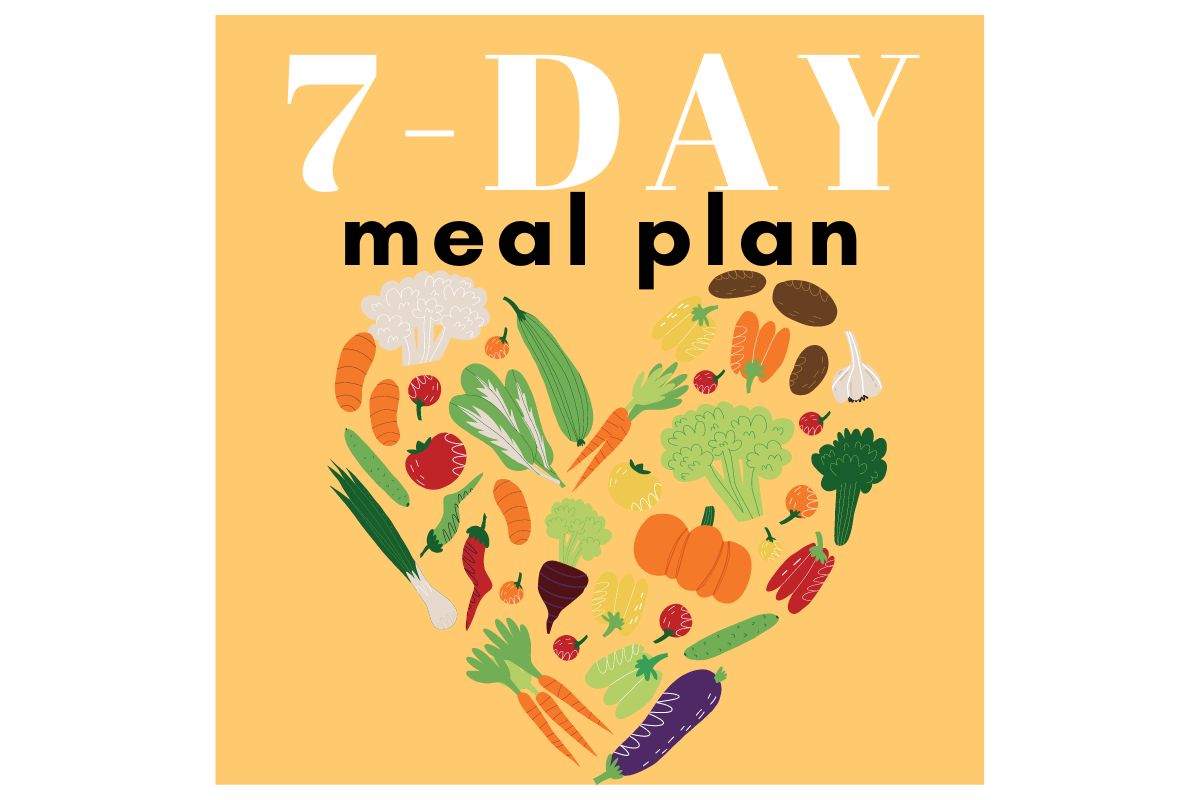
Leave a comment